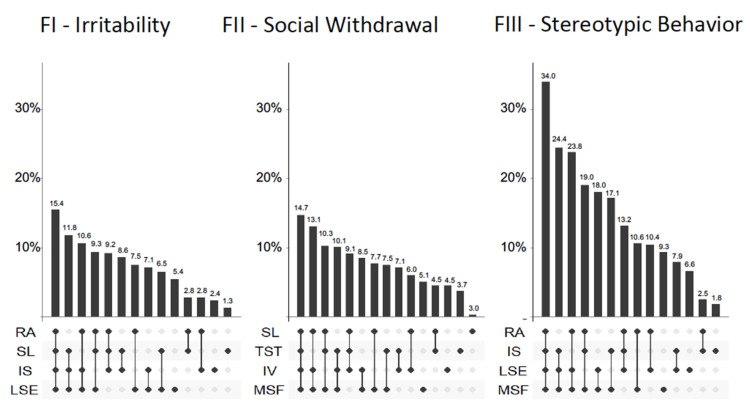Figure 2.
Differential effect of sleep and circadian rhythm parameters on problem behaviors in children with ASD. Percentage of explained variance of ABC-C factors across dominance analysis models. Each column represents a model; the filled dots indicate which variables are included. For each factor, the four variables with the highest unique variance were retained, and the corresponding models included 1–4 variables. Models representing less than 1% are not shown. FI–irritability, Factor I, Irritability on the Aberrant Behavior Checklist–Community; FII–social withdrawal, Factor II, social withdrawal on the Aberrant Behavior Checklist–Community; FIII–stereotypic behavior, Factor III, stereotypic behavior on the Aberrant Behavior Checklist–Community. Sleep variables: LSE (longest sleep episode), TST (total sleep time) and SL (sleep latency). Circadian variables: RA (relative amplitude), IS (interdaily stability), IV (intradaily variability) and MSF (midpoint of sleep).

